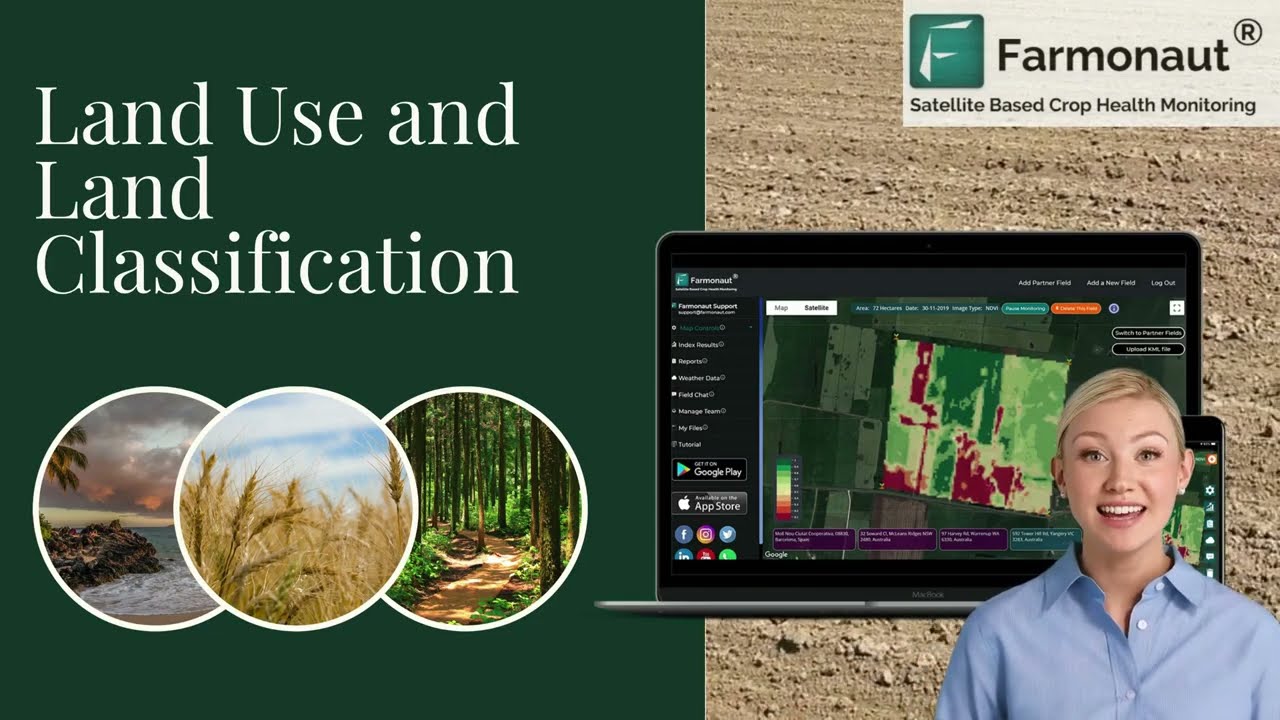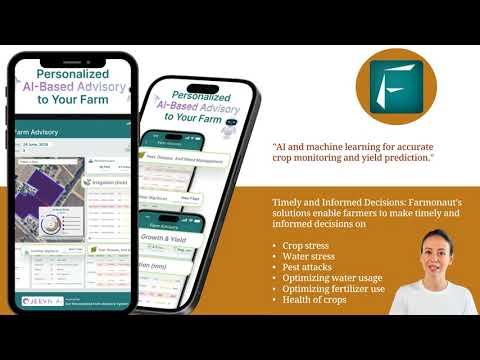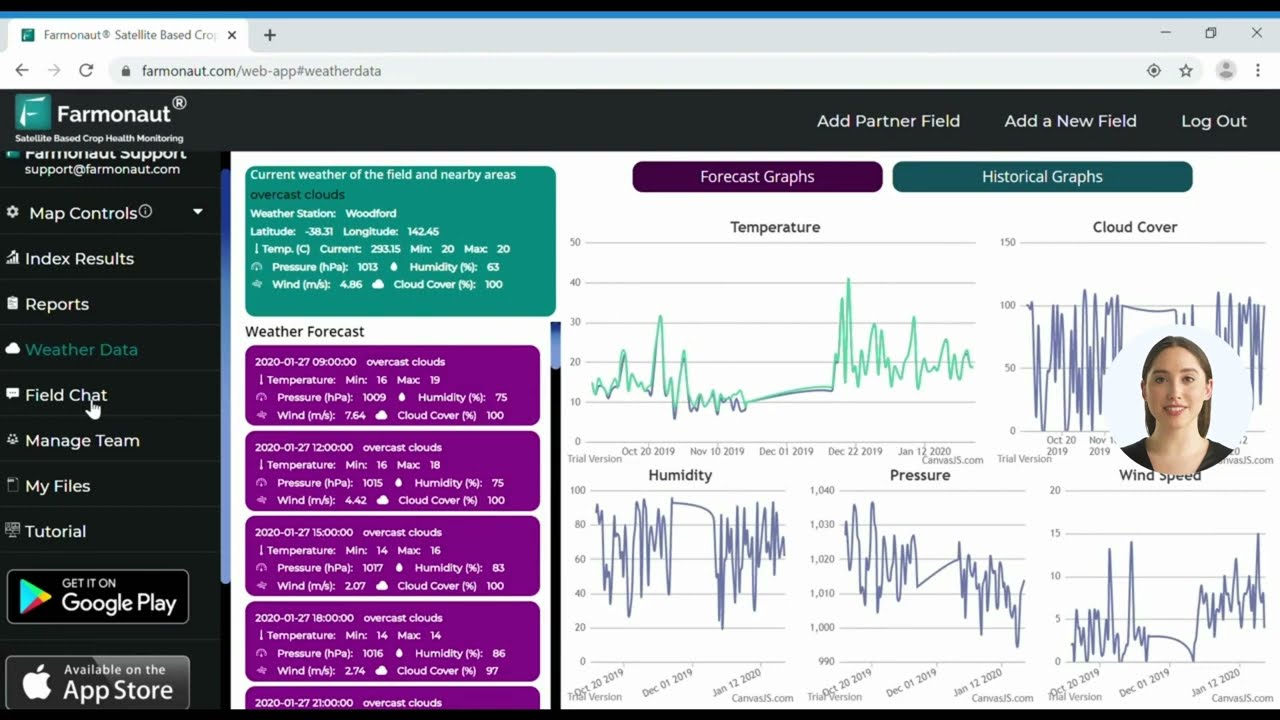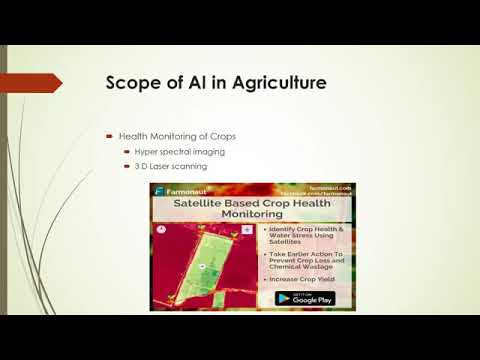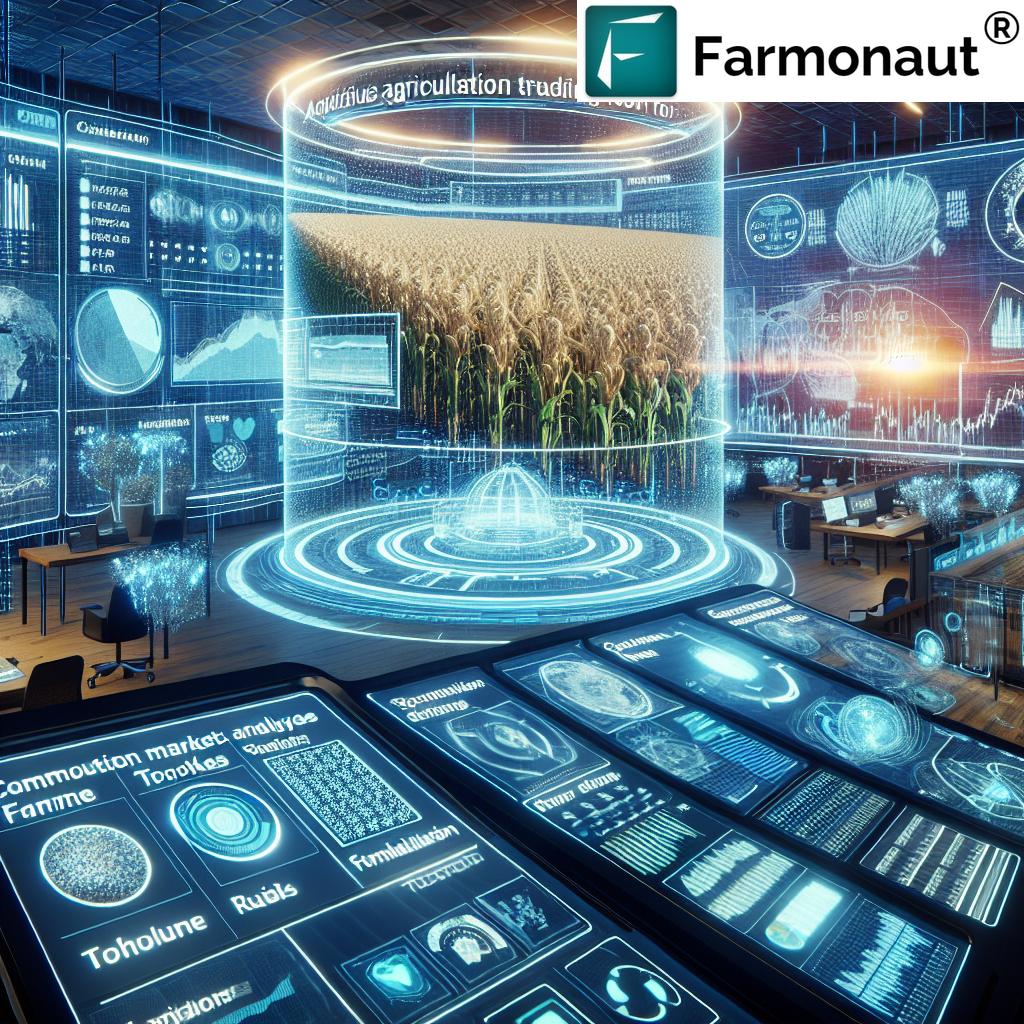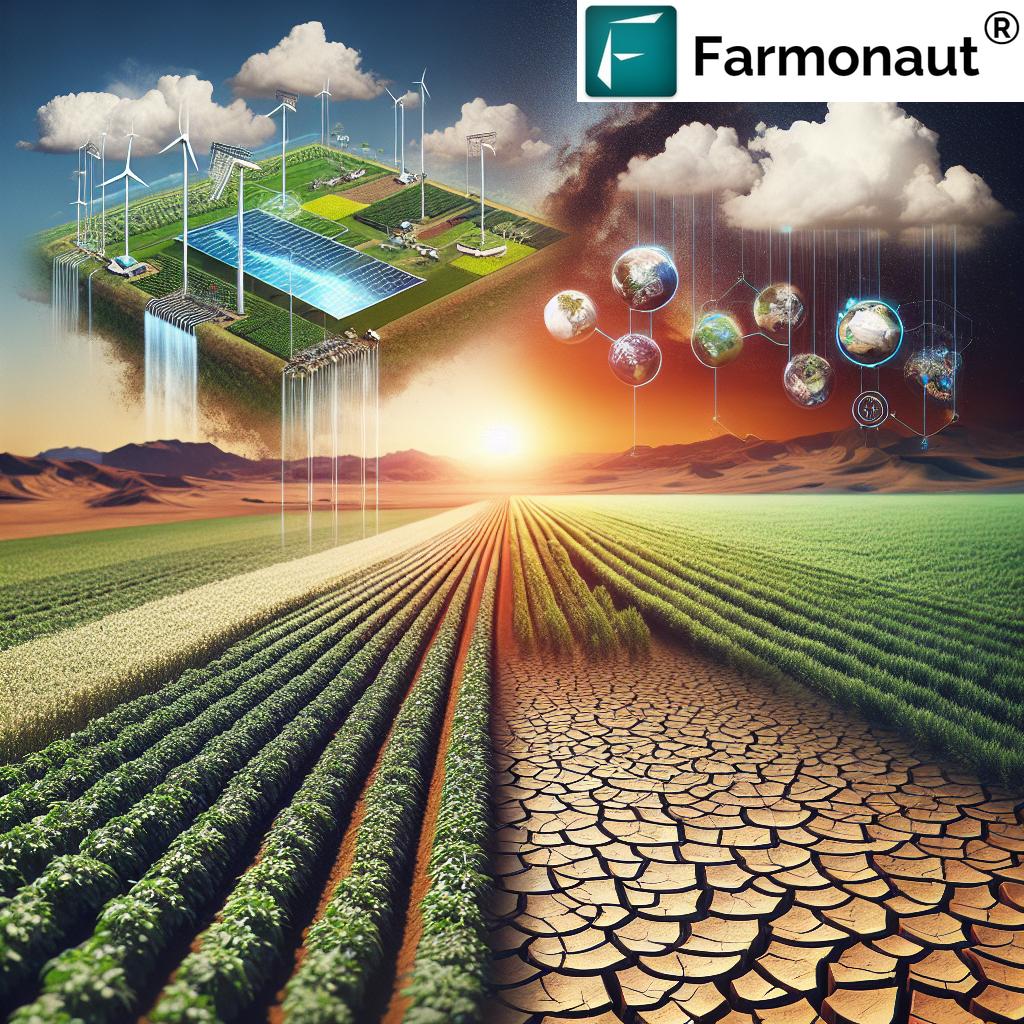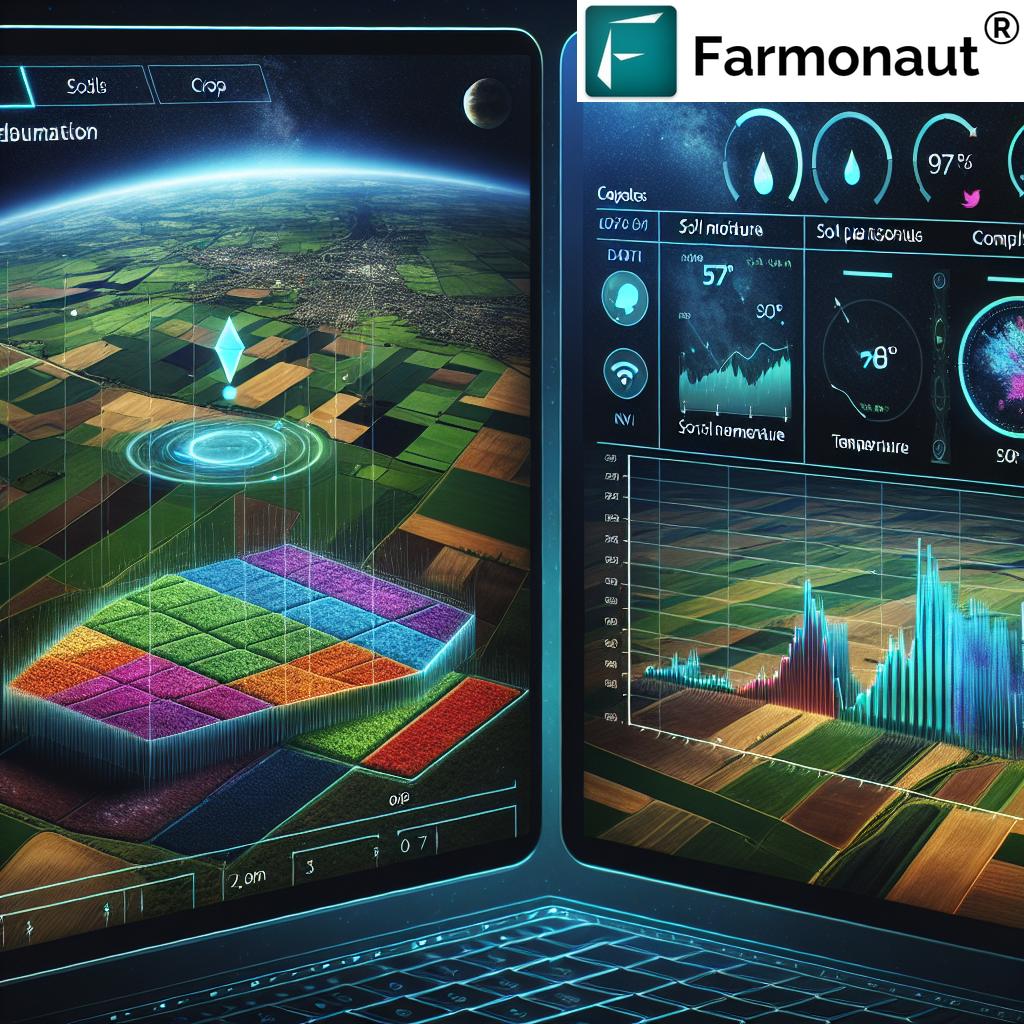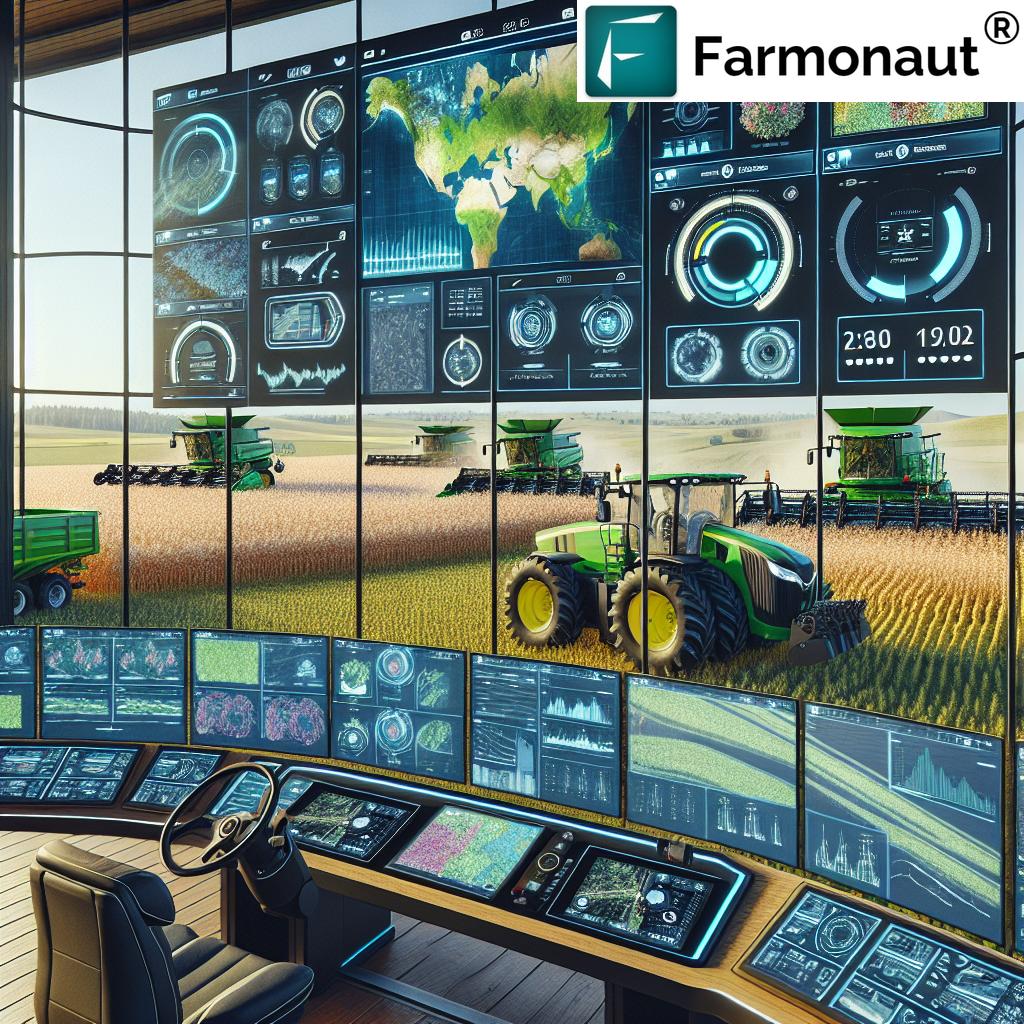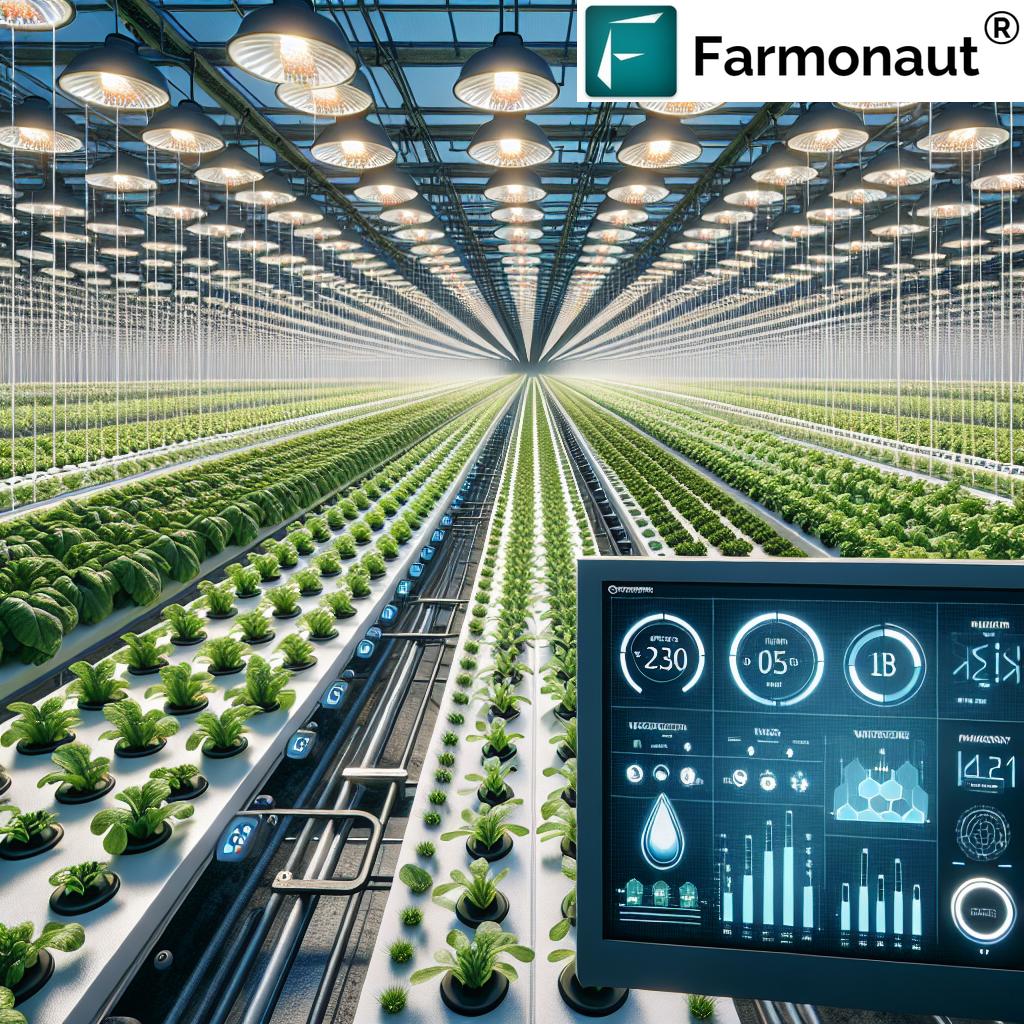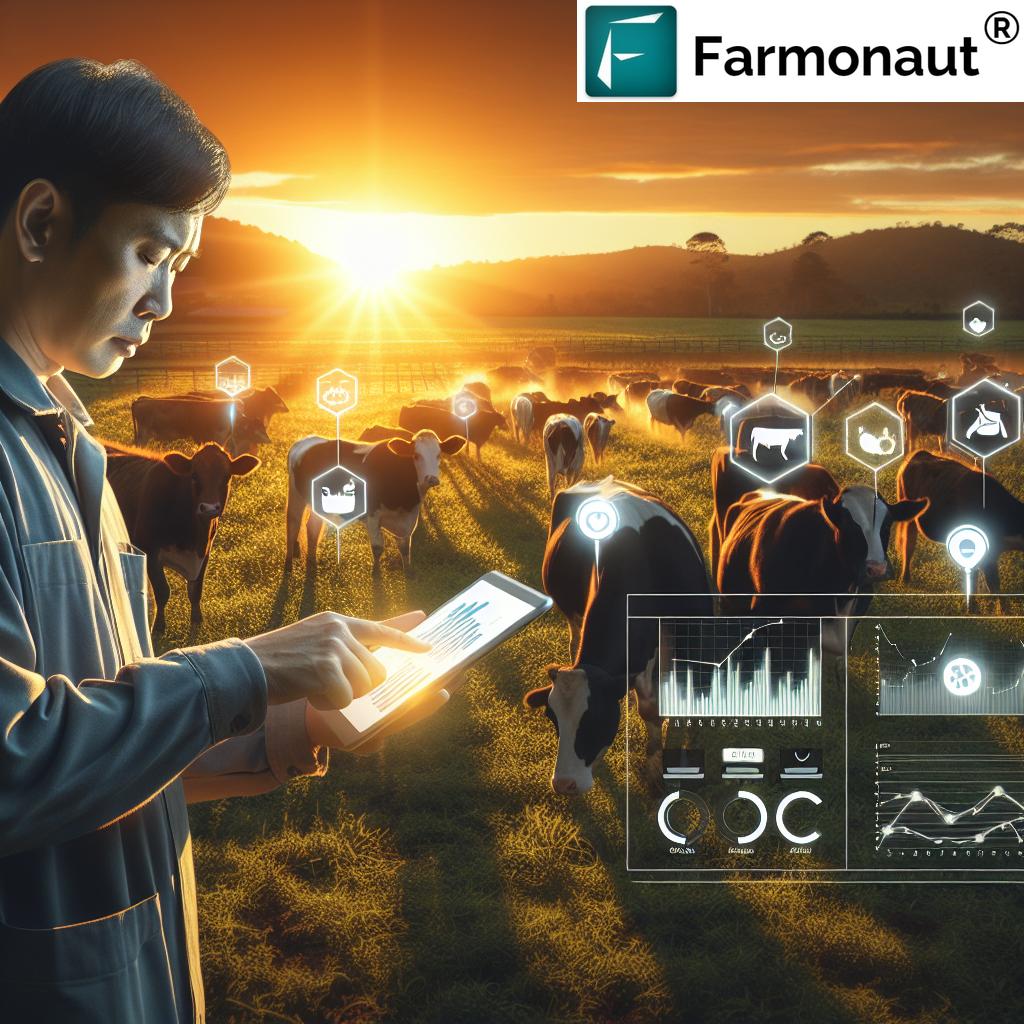Agriculture Monitoring: 7 Shocking Ways Yields Skyrocket
Meta Description: Discover how agricultural monitoring, AI, and precision agriculture technologies optimize crop health, resource efficiency, and sustainable yields through advanced monitoring solutions.
“AI-driven agriculture monitoring can boost crop yields by up to 30% through precise resource management and early disease detection.”
Introduction: The Dawn of Agriculture Monitoring
In today’s rapidly changing agricultural landscape, agricultural monitoring has become more than a trend—it’s a necessity. We face increasing demands for food production, growing environmental concerns, and the stubborn unpredictability of climate. The evolution of agriculture depends on harnessing advanced technologies like precision agriculture, AI, and data-driven monitoring tools to achieve both sustainability and robust yields.
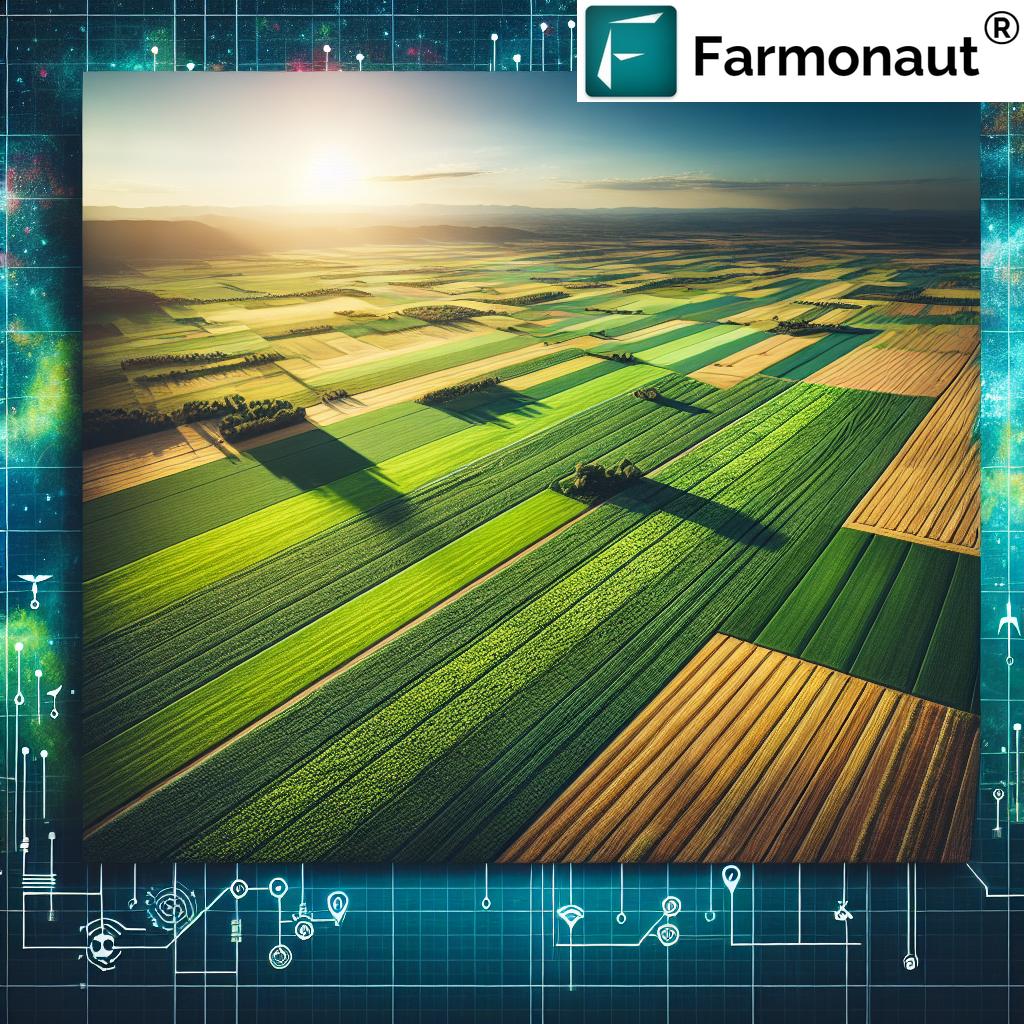
We are now leveraging innovative technologies—once considered futuristic—to solve age-old farming challenges. By combining remote sensing, AI in agriculture, IoT, drones, and real-time data analysis, farmers and agribusiness managers have unlocked transformative pathways to higher yields, better resource management, and sustainable crop production.
Why Agriculture Monitoring Matters: Productivity, Sustainability & Efficiency
At its core, agricultural monitoring is about observing, analyzing, and managing the vital factors impacting our fields, crops, and land use. These practices provide an invaluable bridge between traditional wisdom and modern technology. With continuous monitoring, we gain unprecedented insights into:
- Real-time crop health and growth patterns
- Accurate soil moisture levels and nutrient deficiencies
- Effective irrigation management and water use
- Early detection of pest infestations, diseases, and crop stress
- Efficient use of resources—reducing environmental impact and optimizing input costs
These outcomes are no longer a matter of luck—they’re a result of proactive, data-driven decisions that shape modern agriculture.
Agricultural Monitoring: 7 Shocking Ways Yields Skyrocket
From satellites to AI-powered advisory, let’s take a closer look at the revolutionary technologies that are changing the face of agricultural management. These are the 7 innovation pillars redefining precision, sustainability, and profitability for farmers and land managers alike.
“Precision agriculture technologies reduce fertilizer use by 20%, optimizing sustainability while maintaining or increasing crop productivity.”
1. Remote Sensing and Satellite Imagery for Farming
Remote sensing in agriculture uses satellites orbiting high above our fields, capturing precise, multispectral imagery. These images help us monitor:
- Crop health changes with NDVI and other vegetation indices
- Soil moisture mapping for optimized irrigation
- Detection of pest outbreaks, diseases, and nutrient deficiencies
- Land use changes, resource allocation, and yield prediction
By analyzing this comprehensive data (like with Farmonaut’s advanced satellite monitoring), we empower farmers to make informed decisions, intervene proactively, and limit crop losses before issues escalate.
Satellite imagery for farming is fundamental for mapping field conditions, visualizing trends, and enabling precision agriculture technologies at scale.
2. Drones and UAVs: The Aerial Eyes of Crop Monitoring
Drone crop monitoring involves deploying UAVs equipped with multispectral or thermal cameras. The benefits are profound:
- High-resolution images for detailed crop and field analysis
- Early detection of plant stress, pest infestations, or diseases
- Mapping for targeted irrigation planning and fertilization
- Real-time monitoring of large fields without boots on the ground
This aerial perspective allows us to identify problem zones quickly, apply interventions with surgical precision, and document field conditions as they evolve. Moreover, regular drone flights facilitate seasonal comparisons and foster continuous improvements in yield.
3. IoT Sensors: The Internet of Things in the Field
By integrating IoT (internet of things) sensors throughout the field, we gain unparalleled access to real-time data:
- Soil moisture sensors that enable precise irrigation scheduling
- Sensors for temperature, humidity, and nutrient levels in soil
- Devices providing alerts for abnormal changes or plant stress
- Continuous monitoring directly linked to farm management software
These IoT devices foster efficient resource use and support sustainable farming practices. By accurately measuring the specific requirements of each crop and field, we reduce waste, cut input costs, and actively promote environmental sustainability.
4. AI and Machine Learning: The Brains Behind Proactive Agriculture
AI in agriculture leverages artificial intelligence and machine learning models to analyze the flood of data from all monitoring sources. This enables:
- Prediction of yield potential and harvest windows
- Automated detection of pest outbreaks, diseases, or nutrient deficiencies
- Pattern recognition and trends that guide efficient interventions
- Customized recommendations for resource allocation, based on individual fields
AI doesn’t just crunch numbers—it makes sense of complex agricultural systems, detecting subtle shifts humans might miss, guiding our actions from fertilization decisions to pest management and risk mitigation.
5. Leaf Sensors: Listening to the Plants
Leaf sensors attach directly to crop leaves, providing real-time monitoring of water loss, transpiration, and moisture content. These precise tools:
- Measure plant stress before visible symptoms emerge
- Enable targeted irrigation—delivering water where and when it’s needed
- Support advanced crop health monitoring for maximum yields
By tracking moisture at the plant level, we gain hyper-localized insights that drive both yield improvement and water conservation.
6. Soil Moisture Sensors for Optimal Irrigation
Soil moisture sensors are placed at strategic points across the field to measure volumetric water content in real time. This empowers:
- Optimized irrigation scheduling for saving water and energy
- Reduction of root stress and prevention of over/under-watering
- Improvement in crop health and reduction of resource wastage
Integrating soil moisture data with satellite or drone-based imagery unlocks detailed, field-wide strategies for improved yield mapping in agriculture. Tools like Farmonaut’s crop health monitoring bring this process to your fingertips.
7. Yield Mapping in Agriculture: Data-Driven Decision Making
Yield mapping uses GPS and intelligent data analytics to chart crop yields, moisture levels, and more, right down to the square meter. The benefits include:
- Identifying field variability for targeted interventions
- Measuring the effectiveness of past resource decisions
- Continuous improvement of sustainable farming practices
This methodology allows us to visualize and optimize each segment of our farmland, capitalizing on success and rapidly addressing issues.

Comparison Table: Key Technologies in Agriculture Monitoring
| Technology/Method | Key Benefit | Estimated Yield Increase (%) | Resource Efficiency Gain (%) | Sustainability Impact |
|---|---|---|---|---|
| Remote Sensing & Satellite Imagery | Early detection, vast area monitoring, yield prediction | 20-25 | 22 | Enables large-scale sustainable monitoring & reduces input waste |
| Drones & UAVs | Detailed field view, targeted interventions | 18 | 16 | Reduces chemical/pesticide drift, supports precision agriculture |
| IoT Sensors | Real-time field data for precision inputs | 15 | 20 | Promotes optimal resource use, minimizes runoff |
| AI & Machine Learning | Predictive modeling, automated diagnosis | 28-30 | 25 | Boosts productivity, mitigates climate risk |
| Leaf Sensors | Direct plant stress measurement, precise irrigation | 12 | 18 | Minimizes water usage, prevents over-irrigation |
| Soil Moisture Sensors | Optimized irrigation planning | 14 | 20 | Conserves water, maintains soil health |
| Yield Mapping | Assess management strategies, precision improvements | 10 | 17 | Enables continuous improvement, minimizes overuse of inputs |
Farmonaut: Pioneering Precision Agriculture
The mission of Farmonaut is to democratize precision agriculture worldwide. By harnessing advanced satellite imagery, AI in agriculture, blockchain, and real-time data analytics, Farmonaut enables farmers of all scales to practice effective agricultural monitoring without heavy capital investment in field hardware.
- Satellite-Based Crop Health Monitoring: Using multispectral images, we monitor health, soil moisture levels, and risks at every growth stage for precise interventions.
- Jeevn AI Advisory System: This personalized, AI-powered tool interprets satellites and field data to provide tailored crop management tips, weather alerts, and resource optimization advice.
- Resource and Fleet Management: Our app offers logistics planning and fleet tracking for large farms, reducing downtime, costs, and environmental impact.
Discover Farmonaut Fleet Management Tools → - Blockchain Traceability: Every harvest can be transparently tracked from field to shelf, safeguarding food authenticity and promoting consumer trust.
Explore Farmonaut Product Traceability → - Carbon Footprinting: We offer easy-to-use solutions to monitor and minimize emissions, essential for meeting modern sustainability and regulatory targets.
Track and Reduce Your Agriculture Carbon Footprint Now → - Large Scale Farm Management: Monitor, plan, and optimize vast areas with a unified dashboard and smart analytics.
Farmonaut Large-Scale Farm Management Solutions →
Access Farmonaut’s API to seamlessly integrate satellite and weather data into your own systems and applications:
Farmonaut Satellite & Weather API |
Developer Documentation Here
Core Benefits of Agricultural Monitoring
Let’s summarize the primary benefits realized by leveraging agricultural monitoring:
- Enhanced Productivity: Real-time activity and health monitoring mean timely interventions, happier plants, and bigger yields.
- Resource Efficiency: Data-driven irrigation and fertilizer planning slashes waste, reducing input costs and maximizing all resources.
- Early Detection of Issues: Automated alerts for pest or disease outbreaks lead to earlier, more effective treatments and reduced crop loss.
- Sustainable Farming Practices: From water savings to chemical input reduction, monitoring supports environmental stewardship and compliance.
- Data-Backed Decisions: Monitor past actions, tweak strategies, and rely on hard evidence rather than guesswork.
- Continuous Improvement: Advanced mapping and analysis tools allow us to measure, compare, and improve season after season.
Challenges and Considerations in Implementing Monitoring Tools
While the transformative power of these technologies is clear, we must also approach agricultural monitoring with transparency regarding its challenges:
- Data Management & Integration: The volume and variety of data from satellites, drones, and sensors require robust systems and skilled staff to interpret complex datasets.
-
Upfront Cost: Initial investment in monitoring can be a barrier—however, platforms like Farmonaut make satellite-based monitoring
accessible at a fraction of the cost by utilizing subscription models. - Technical Expertise: Proper use and interpretation of monitoring tools require education and training, which can be inconsistently available in some regions.
- Data Interpretation: Misreading the data can lead to ineffective or even harmful interventions. Ongoing support and advisory tools are key.
With these considerations, we must support farmers not just with technology, but with education and support—delivering on the potential of these innovations without leaving anyone behind.
The Future of Agriculture Monitoring: Towards More Resilient and Sustainable Farming
The trajectory of agricultural monitoring is one of continuous improvement, accessibility, and global impact.
- Integration with AI & Machine Learning: The evolution of AI in agriculture promises ever more accurate yield prediction, smarter disease forecasting, and fully automated decision support.
- Affordable, User-Friendly Technologies: Innovations like Farmonaut’s app-based satellite monitoring and API access mean advanced farm management is viable even for smallholder farmers.
- Scalability & Inclusion: Whether managing a hectare or a hundred thousand, today’s systems scale up—and will reach ever broader audiences in both developed and developing agricultural regions.
- Climate Resiliency: Big data and real-time observation will increasingly be harnessed to mitigate the effects of unpredictable environmental conditions, adapting practices as climates shift.
The promise of agricultural monitoring is clear: farming that is more productive, less wasteful, and fully sustainable for both people and planet.
Get Started: Farmonaut Subscriptions, Apps, and Solutions
Ready to integrate next-generation agriculture monitoring into your operations? With Farmonaut, enjoy flexible subscription models tailored to farm size and monitoring frequency.
Download Farmonaut: Monitor your crops, fields, and farm operations via the web, Android, or iOS apps, or access our browser/web platform here.
API Integrations: Are you a business or developer? Check out our API and Developer Docs for direct satellite and weather data feeds.
Need specialized solutions?
- Enhance sustainability with carbon footprint tracking.
- Secure food supply chains with blockchain-based traceability and transparency.
- Streamline agricultural loans and insurance with satellite-based verification.
- Manage extensive farms or forests with our large scale farm management dashboard.
- Access crop, plantation, and forest advisory services via our dedicated advisory portal.
FAQs on Agriculture Monitoring & Technology
What is agricultural monitoring, and why is it important?
Agricultural monitoring refers to the continuous observation, analysis, and management of farm and field conditions using modern technologies. It is essential because it helps us detect crop health issues, optimize inputs, and anticipate potential problems before they cause losses.
How can precision agriculture technologies help with sustainability?
Precision agriculture technologies like IoT sensors and satellite monitoring allow us to apply water, fertilizer, and chemicals only where and when needed. This reduces environmental impact, lessens the risk of overuse, and fosters long-term sustainable farming practices.
What are the main benefits of using AI in agriculture?
AI in agriculture transforms historic and real-time data into actionable insights—from predicting yields to recognizing patterns in pest or disease outbreaks. Ultimately, it enables proactive decision-making for better productivity and resource efficiency.
Are these monitoring tools affordable for smallholder farmers?
Platforms like Farmonaut have made high-tech agricultural monitoring accessible—even to smallholder farmers—by relying on satellite data and app-based delivery. Flexible subscriptions and minimal hardware requirements make cost barriers far lower than traditional field-based precision agriculture systems.
How does satellite imagery help with crop health monitoring?
Satellite imagery for farming reveals changes in vegetation health, water stress, and nutrient status over time. It supports early detection, large-scale monitoring, and the planning of resource-efficient interventions.
What’s the role of soil moisture sensors in irrigation?
Soil moisture sensors directly measure the water content at various depths, supporting precise irrigation scheduling. This reduces water wastage, lowers costs, and prevents plant stress from both under- and over-watering.
How do yield mapping and data analytics improve future harvests?
Yield mapping in agriculture allows us to visualize which areas of a field performed best or worst, guiding future planting, fertilization, and irrigation plans. Over time, this iterative approach leads to progressively better crop yields.
Conclusion: Embracing Future-Ready Farm Management
Agricultural monitoring represents not just a technological leap, but a foundational change in how we steward land, crops, water, and resources. By embracing precision agriculture technologies—from remote sensing to AI advisory—we create a food system that is more efficient, productive, and sustainable for generations to come.
Farmonaut stands at the forefront of this revolution. By making crop health monitoring affordable, robust, and easy to access, we are empowering farmers, agribusinesses, and governments globally to navigate the challenges—and harness the potential—of modern farming.
Let’s cultivate a resilient, resource-efficient, and high-yielding tomorrow—together.


